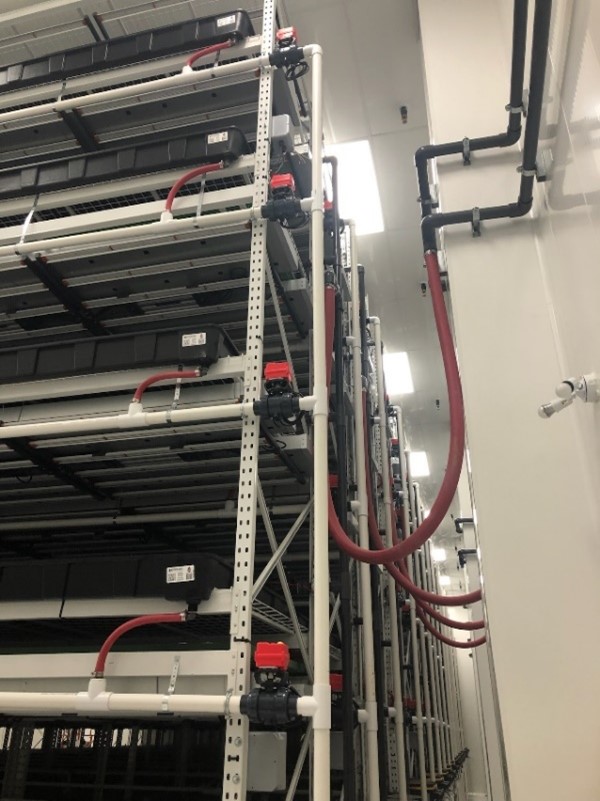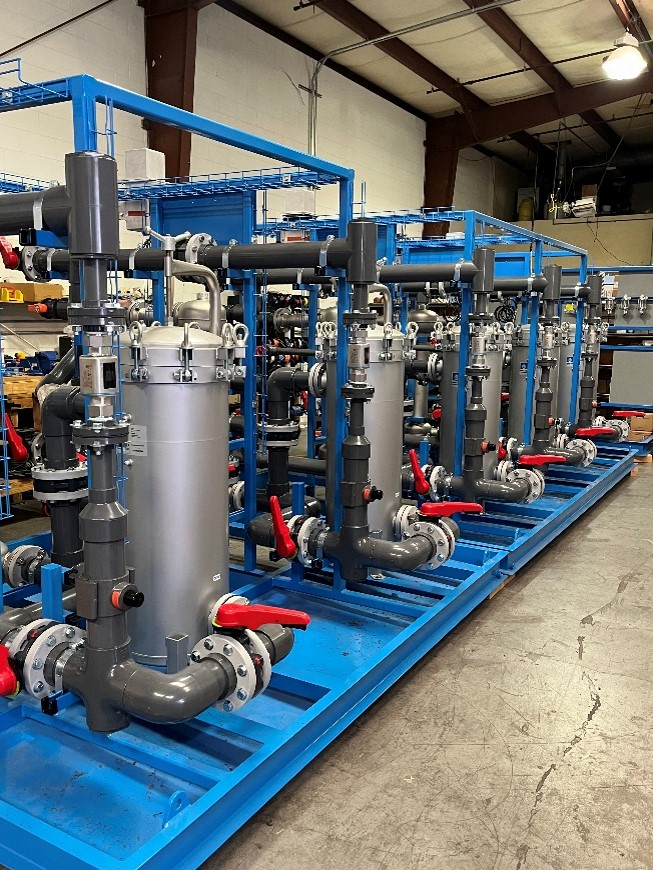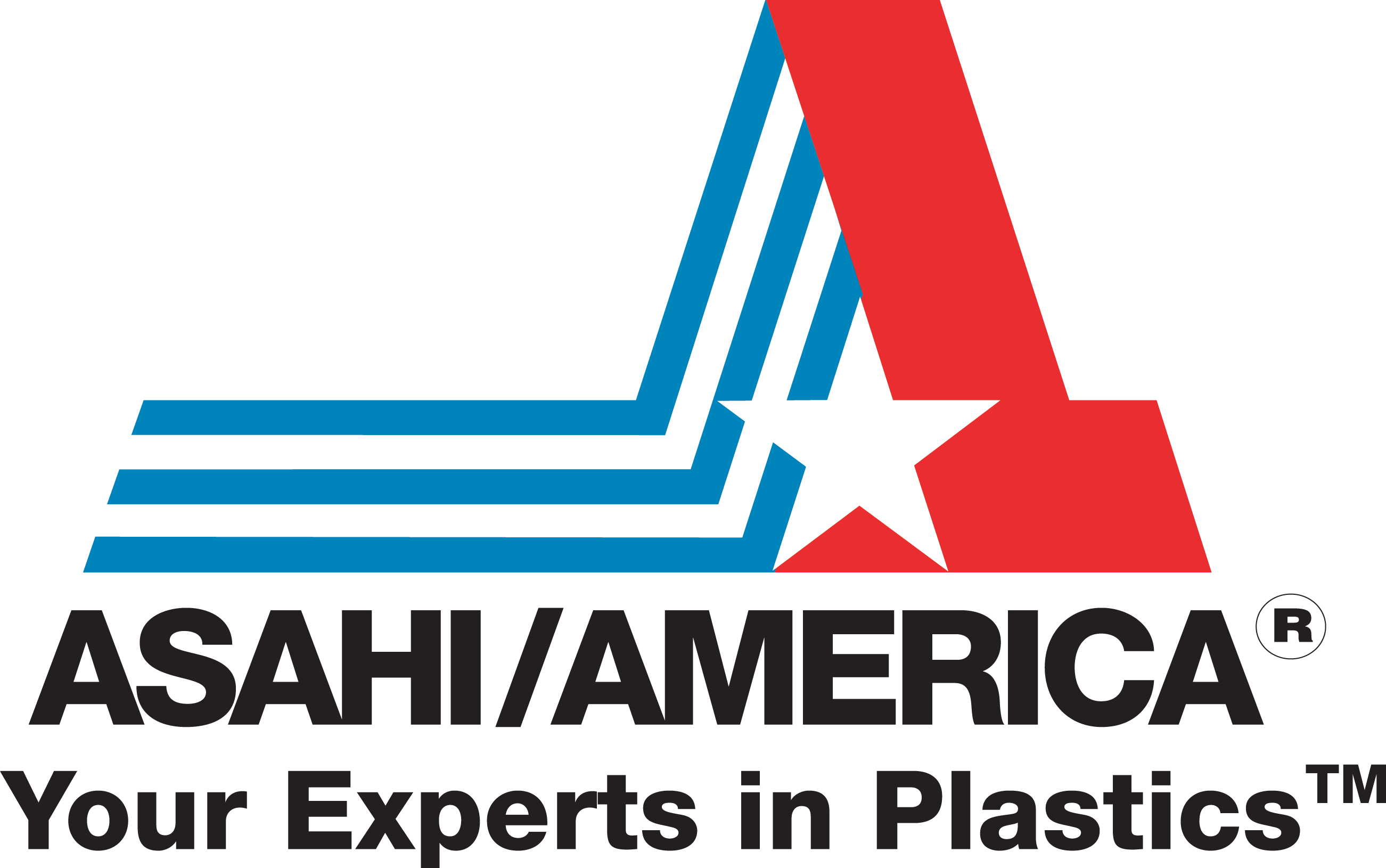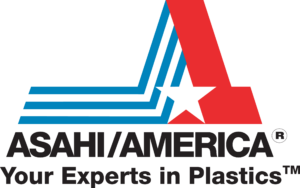

February 1, 2024
Inner Circle
Market Outlook: Thermoplastic Valves and Piping in the Controlled Environment Agriculture (CEA) Industry
Contributed by Shane McDaniel, Business Development Manager (CEA, Entertainment, Oil & Gas)
Beginning in 2021, Asahi/America started dedicating time and research to understanding and penetrating the Controlled Environment Agriculture (CEA) market. CEA represents an advanced and intensive form of hydroponics-based agriculture where plants grow within a controlled environment for optimized yield.

Unlike conventional greenhouses, CEA demands sophisticated engineering considerations for success and encompasses vertical farming, hydroponics, aquaponics, greenhouses, and, more recently, variations of cannabis cultivation. With the expectation that this market will grow exponentially into 2030, it is essential to understand where thermoplastic materials, like the products offered by Asahi/America, can fit into the control space of these facilities.
In the CEA market, thermoplastic valves and piping find widespread applications due to their durability, corrosion resistance, and suitability for various agricultural processes. Some of the most common applications for thermoplastic valves and piping in the CEA market include:
1. Fertigation Systems:
Thermoplastic valves and piping are commonly used in fertigation systems, where fertilizers and nutrients are delivered to crops through irrigation. This process involves the precise control and distribution of fertilizers dissolved in water. Thermoplastics, such as PVC or CPVC, are well-suited for handling the chemicals used in fertigation, while automation with electric actuators like the Series 19 provides reliable control of nutrient distribution in either batch or direct injection systems.
2. Water Filtration System:

Filtration is crucial in CEA to ensure that water provided to plants is free from impurities. This necessity is an excellent example of a market crossover that can be aided by Asahi/America expertise. Asahi valves and piping are often used in water filtration systems, providing resistance to corrosion and chemical degradation. Raw water, or poorwater, requires a level of treatment that involves removing dissolved salts, solids, and other contaminants that harm crop production. Poorwater is often filtered via reverse osmosis and then sent downstream.
3. Hydroponic Systems:
Hydroponic systems, which involve growing plants without soil, rely on nutrient-rich water solutions. Thermoplastic valves and piping are suitable for conveying these solutions, offering corrosion resistance and durability in the unique environment of hydroponic cultivation. A common maintenance concern to CEA farming can be the buildup of sediment and other biomass in the piping system. As beds are filled with sweet water and runoff is cycled, biomass like algae, growth media, and other sediment can accumulate. This buildup can contribute to losses in water quality, influence nutrient absorption, and negatively affect yield. An ideal solution is to utilize an inline strainer to gather this biomass and provide a collection and clean-out source. An example of this would be the Asahi/America strainer drain combination. With a large filtration capacity and low-pressure drop, the unit is ideal in areas where biomass can accumulate. With features like a true union design and a clear strainer body, maintenance and operation personnel can easily identify areas that need cleaning.
4. Aquaponics Systems:
Aquaponics combines aquaculture (raising fish) with hydroponics. Thermoplastic valves and piping play a role in maintaining the circulation and transfer of water between the fish tanks and the hydroponic beds, ensuring efficient nutrient distribution. Asahi is well respected in these applications due to our extensive experience in zoos, aquatic exhibits, and recreational facilities. Specifying valves that will ensure the safety of both the animals and the crops is critical for success.
5. Greenhouse Irrigation:
Greenhouses in CEA require precise irrigation systems for optimal plant growth. Thermoplastic valves and piping are used to control and distribute water within greenhouse structures, providing resistance to the environmental conditions present in these controlled environments.

6. Vertical Farming Systems:
Vertical farming, a key component of CEA, involves growing crops in vertically stacked layers. Thermoplastic valves and piping are employed in the irrigation, nutrient delivery, and water management systems essential for the success of vertical farming operations. Some common challenges for growers include space constraints for piping, valves, biomass settling in piping and control points, poorly controlled fertigation zones, and limited onsite personnel. Systems should be designed to allow maximum space utilization in the facility and ensure easy access for growers to maintain and monitor production.
7. Cannabis Cultivation:
With the expanding legalization of cannabis cultivation, thermoplastic valves and piping play a role in providing reliable and corrosion-resistant solutions for water distribution, nutrient delivery, and climate control in cannabis cultivation facilities.
The versatility of thermoplastic materials, coupled with their resistance to corrosion and chemical degradation, makes them well-suited for the demanding and intricate requirements of Controlled Environment Agriculture. As a result, they contribute significantly to the efficiency and success of various agricultural processes within this specialized market.
Fortunately for Asahi, our expertise in applications such as chemical treatment and handling, water filtration, and system fabrication aligns well with the requirements of this market. Asahi/America’s recent success includes securing several hundred automated valve packages of Series 19 and Type-21 ball valves for water distribution in a vertical farm in Ohio.
In the ever-evolving landscape of Controlled Environment Agriculture, Asahi’s expertise is growing daily, and we are poised for an extraordinary journey ahead. Join us on this journey of innovation, where our thermoplastic solutions meet the unique challenges of CEA, unlocking new possibilities for growth and success. As we navigate the path to a more sustainable future and beyond, let’s cultivate success together with Asahi – your trusted partner in the future of agriculture.
EDITOR’S NOTICE: Please note, the information in this article is for educational purposes only and does not supersede any Asahi/America technical information or product specifications. Please consult Asahi/America’s technical department at 1-800-343-3618 or [email protected] on all product applications in regards to material selection based on the pressure, temperature, environmental factors, chemical, media, application, and more.

